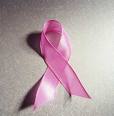
Breast cancer is the most common form of cancer in women and the second leading cause of cancer deaths in American women. In 2009, approximately 194,280 patients are estimated to be diagnosed with invasive breast cancer, and 62,280 with carcinoma in situ. An estimated 40,610 will die of this disease. For a woman of average risk, the lifetime incidence of breast cancer is one in eight. Screening of asymptomatic women has been accredited for the decline in mortality of breast cancer. The current recommendations from the American Cancer Society for normal-risk women are as follows: 1) Yearly mammogram starting at age 40. The age at which screening should be stopped should be individualized by considering the potential risks and benefits of screening in the context of overall health status and longevity; and 2) Clinical breast exam every 3 years for women in their 20’s and 30’s, and every year for women 40 and older. The evidence to justify mammography for population-based screening is derived from both randomized and several non-randomized clinical trials. Eight randomized trials totalling hundreds of thousands of patients include the Health Insurance Plan of New York, four studies from Sweden, one from the United Kingdom, and two from Canada. The US BCDDP (Breast Cancer Detection Demonstration Project), the largest study of mammography and clinical breast exam, also demonstrated that screening decreases breast cancer mortality. During the past decade, advances in mammography include digital techniques and computer-aided detection. Film (non-digital) mammography has been estimated to have approximately 65-80% sensitivity at the desired specificity of 90%. The investigators from the DMIST (Digital Mammographic Imaging Screening Trial) reported that the overall diagnostic accuracy of digital and film mammography is similar. However, digital mammograms are more accurate in women under the age of 50 years, pre-menopausal or peri-menopausal women, and those with radiographically dense breasts. Two years later, another large study compared film mammography with digital mammograms read with computer-aided detection software. The authors found that diagnostic specificity significantly decreases from 90.2% to 87.2% with computer-aided detection, whereas sensitivity does not change. The rate of biopsy increases by 19.7%. Thus, more expensive technology does not necessarily translate into better outcome. In women at high risk for developing breast cancer, screening may also involve breast ultrasound and/or MRI (magnetic resonance imaging). High risk factors include BRCA gene carriers, personal or strong family history of breast cancer, prior atypia such as ADH (atypical ductal hyperplasia) or LCIS (lobular carcinoma in situ), and prior chest irradiation. Sonography may be useful in dense breasts. Screening ultrasound can lead to biopsy in 2%-4% of women, of which carcinoma was found in 10%-16% of these biopsies. The ACR Imaging Network trial 6666 is evaluating screening sonography in high-risk women. Breast MRI has also recently been used by clinicians in many high-risk patients. In previous reports, MRI resulted in biopsy in 7%-18% of women, of which breast cancer was detected in 24%-88% of these biopsies. We do not know yet whether ultrasound or MRI decreases breast cancer mortality in high-risk population, beyond that achieved by screening mammography. Currently, breast MRI is also indicated in women with newly diagnosed unilateral breast cancer. A recent publication showed that MRI can detect cancer in the contralateral breast that is missed by mammography and clinical examination in 3.1% of cases. The sensitivity of contralateral breast MRI is 91%, the specificity 88%, and the negative predictive value 99%. Despite the proven success of breast cancer screening with mammography, many investigators in the US have noted a decline in its use. The NHIS (National Health Interview Survey) estimates from 2005 demonstrated a decline in mammogram screening to 66%, from 70% in 2000. This may unfortunately explain the reported decrease in the incidence of breast cancer, i.e. the discovery of new breast cancer.










